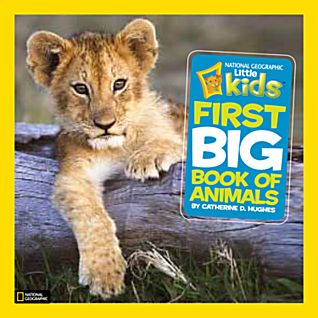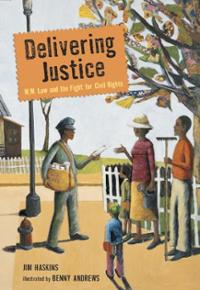
Phoenix the Fireboat: The True Story By Jack Cutter Published in 2002 32 pages
Fantastic read aloud! When you engage the kids with a good picture book "that really happened", it can really resonate. Since this is a San Francisco story, the students are able to connect it to their background knowledge. There are some great shots of the Bay Bridge and the 1989 quake that pull in the students.
The Phoenix was built in 1954. In 1989, it was thought to be obsolete and too expensive to operate. When the quake hit, fire threatened to engulf the Marina, and the water supplies were compromised.
The Phoenix saves the day in a nick of time, in simplistic fashion, albeit. Mind you, this book provides a dramatic and engaging account, but it pales in comparison to the actual events.
This book works very well as a read aloud when taken at face value. With more advanced students, you could have them compare the narrative of the book with the following wikipedia passage, and open up the question of how true is a "true" book?
Perhaps you can have them add some pages in order to make the story more complete.
From Wikipedia
Phoenix played a notable role in the response to the 1989 Loma Prieta earthquake.
[16] At 5:04 pm on October 17, 1989, a major earthquake rumbled through the
San Francisco Bay Area. One of the hardest-hit locations was the Marina District of San Francisco; a densely populated neighborhood built up primarily in the 1920s on rubble, sand and debris dumped at the edge of the bay following the 1906 earthquake. A number of buildings collapsed, and firefighters were called to rescue trapped residents. Subsequent to a sharp aftershock,
[17] a fire broke out in a three-story building at Divisadero and Jefferson, threatening nearby buildings. Fire engines connected their hoses to the city's seawater-based Auxiliary Water Supply System (AWSS) and began to quench the fire, but an explosion caused the structure to collapse onto the fire hydrant. Fire crews were forced back, and with the assistance of off-duty police and civilian volunteers they ran hoses four blocks away to alternate sources. Further explosions caused other structures to collapse onto the newly laid hoses.
[16] At about the same time, other fire companies in the Marina were reporting water pressure problems with both the AWSS and the regular municipal water system.
[16] The AWSS was suffering from broken underground lines and from a 20% loss in stored water volume—both from earthquake damage—and from broken high pressure hydrants caused by building collapses.
[18] At 6:16 pm
Phoenixwas called to assist.
[19]
At 6:49 pm fire crews waiting to connect to
Phoenix reported she was having difficulty getting close enough because of low tide conditions.
[20] Despite the problems requiring pilot and commander Arvid Havneras
[21] to perform an extraordinarily hazardous docking procedure, at 7:00 pm
Phoenix was ready to pump at the Marina lagoon, two blocks away from the first fire. By this time the whole neighborhood was threatened with destruction by fire.
[16] Fire crews were manning hoses laid in anticipation; firefighters at the burning buildings were instructed to hold their ground, that they would soon have more water.
[20]
Phoenix connected hoses to an engine company and to two ladder trucks and commenced pumping seawater from the bay. Fire crews renewed their efforts, making a frontal attack on burning structures. Soon, one of the Fire Department's Hose Tenders arrived in the lagoon carrying 5,000 feet (1,500 m) of 5-inch (130 mm) hose, followed shortly by another hose tender—they connected to
Phoenix to relay water to more distant engine companies.
[16] In a parallel effort, the AWSS lines were inspected by city workers, temporary repairs made, and two high-pressure pump stations were brought back into operation at about 8 pm, supplying 10,000 U.S. gallons per minute.
Phoenix worked until all the Marina fires were under control, pumping seawater continuously for 15 hours at the rate of 6,400 gallons per minute, a total of 5.5 million gallons (20.8 ML).
[16]
Phoenix is credited with saving the area from further destruction.
[22] One of Feinstein's last mayoral acts was to save the city's only fireboat from suggested budget cuts.
[23] Some 21 months later the earthquake struck. Feinstein wrote that the boat "unquestionably saved the Marina from a greater catastrophe".
[21] The fireboat's role in the earthquake is the subject of a children's book,
Frankie & The Phoenix.
[24] Senator Feinstein read the book to students at the opening of a new San Francisco elementary school dedicated in her name in August 2006.
[23]
Subsequent to the 1989 earthquake, $50,000 from grateful Marina property owners, and $300,000 from an anonymous donor were used to provide
Phoenix with a colleague.
[7] Guardian, an older fireboat built in 1951, was purchased from the City of
Vancouver, British Columbia, and refurbished. She was piloted down the Pacific Coast to dock alongside
Phoenix at Pier 22½.
[7] In 1999, the shared fireboat house was declared San Francisco's 225th Historic Landmark.
[25]





















